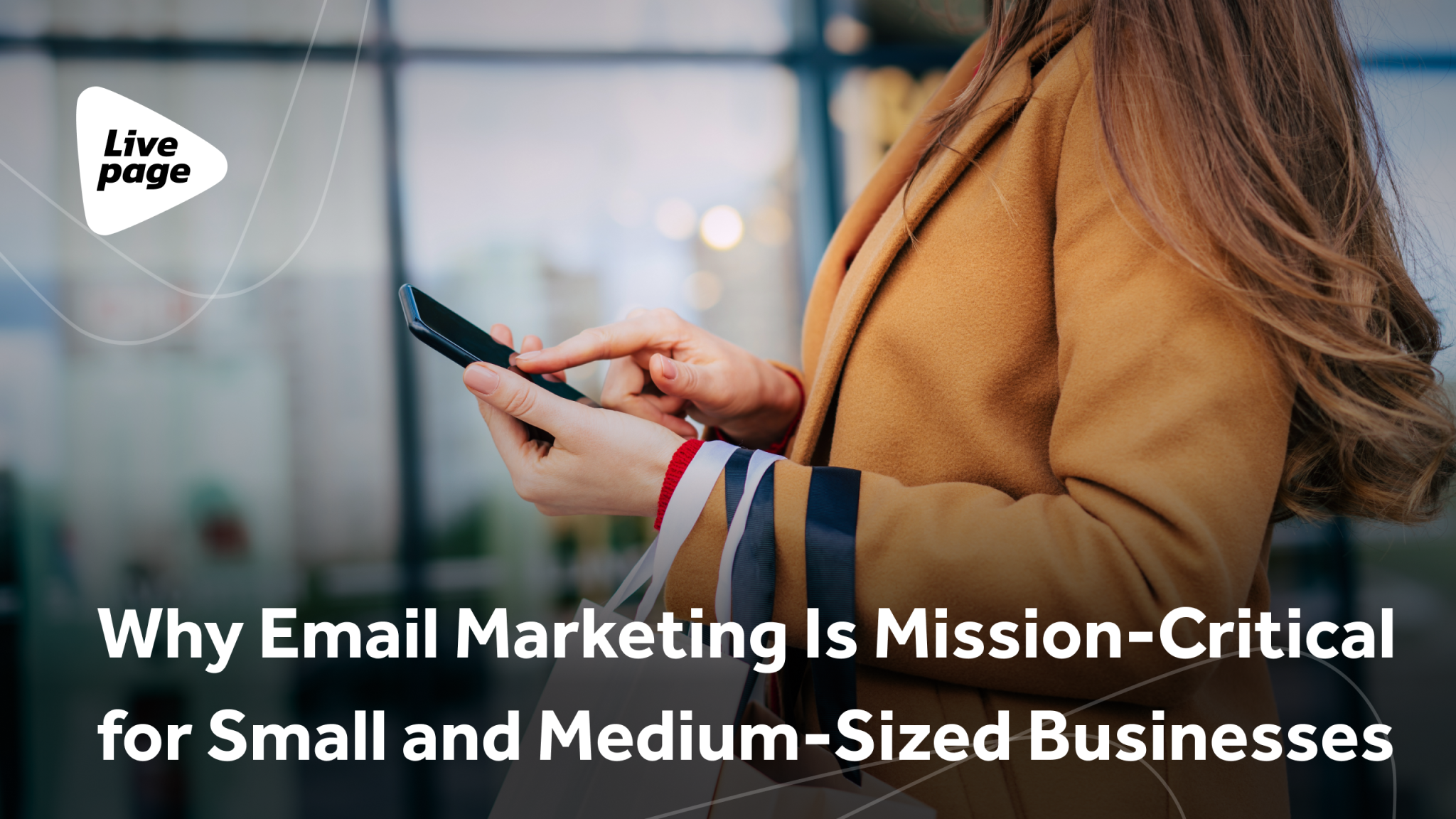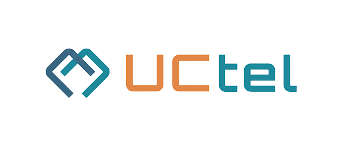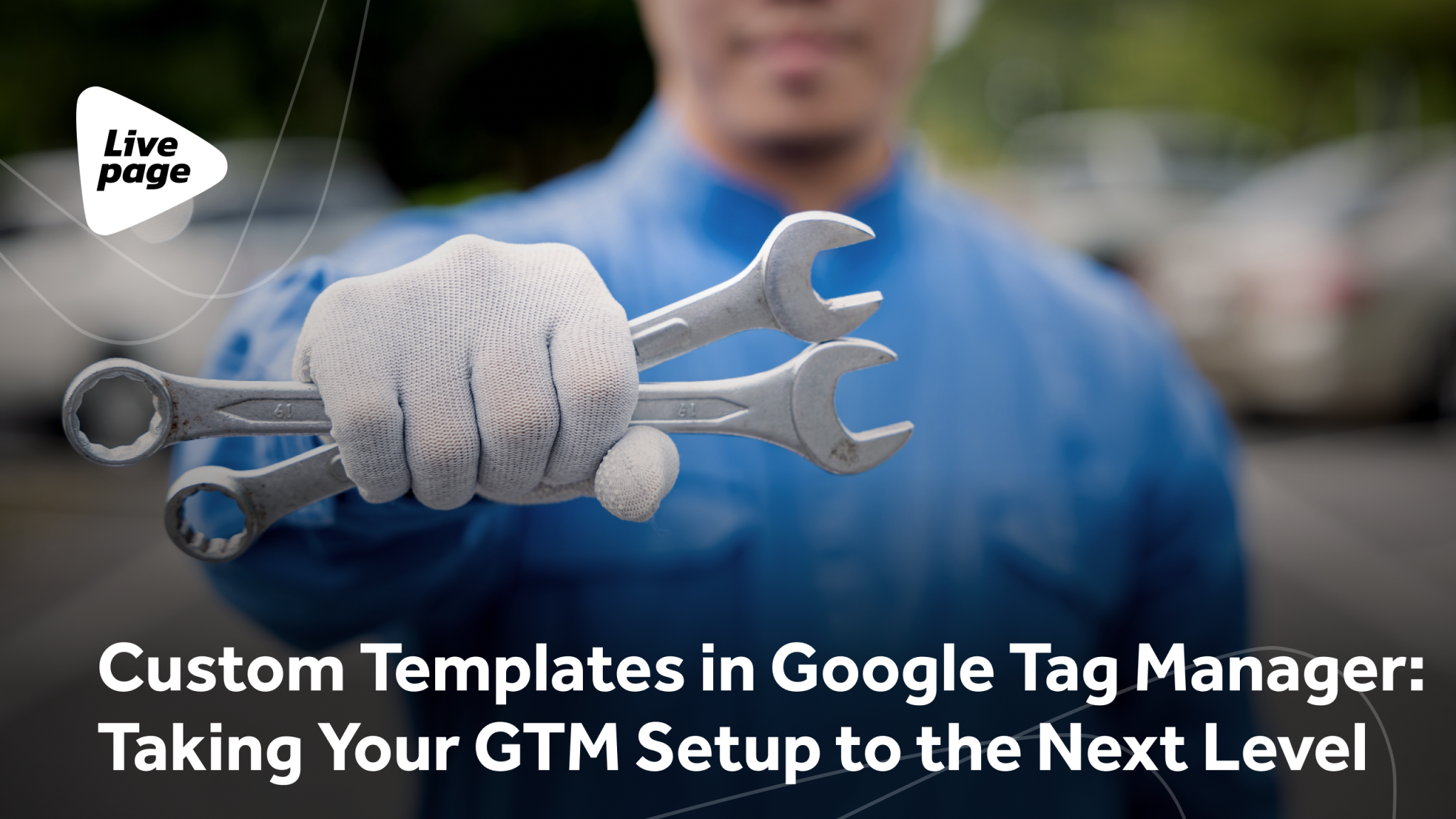
Recommendations for Setting Up and Optimizing Your PMax Campaign

Modern PPC promotion requires constant improvement and adaptation to achieve optimal results. One of the most promising and effective tools when dealing with PPC is a Performance Max campaign in Google Ads. It uses Google’s machine learning and artificial intelligence to get the most out of your promotions.
In this article, we will take a closer look at what PMax campaigns are, how they work, and how to set up a Performance Max campaign of your own. We’ll also consider the key aspects of PMax campaign optimization so that you can maximize this method’s potential and achieve impressive results.
What is Performance Max?
Performance Max is one of the most popular solutions for advertisers in Google Ads, utilized to maximize conversions across Google’s various advertising channels. Thanks to Performance Max, you can effectively run ads on Search, Display Network, Maps, Gmail, and YouTube. And that’s all of the above included in a single campaign! This makes managing and implementing advertising strategies much easier, allowing you to focus on the effectiveness of your campaign.
The ability to define specific campaign goals is one of the important aspects of Performance Max. A campaign’s aim can be increasing conversions or maximizing the ad ROI. This goal definition plays a key role in setting bids, which is automated with the help of Google’s Smart Bidding technology that uses artificial intelligence.
Creating ads in Performance Max is an easy and intuitive process. You only need to upload text components such as headlines, descriptions, and visual content in the form of banners or videos (optional). Also, the most valuable feature of PMax is that you can use the product feed from the Merchant Center and display product ads.
One more crucial element of Performance Max is its audience targeting, which uses artificial intelligence and machine learning to find your potential clients. All you need to do is provide “Audience Signals,” which can include landmarks based on information from your website, defined demographics, key search terms, and audience interests. This information helps the campaign to go through the training stages efficiently and achieve results quickly.
Performance Max is the ideal choice for advertisers who want to reach all Google advertising platforms and showcase their products everywhere, with the ability to manage the process as a single campaign.
How do you set up a PMax campaign?
The interface in Performance Max is pretty intuitive, so if you want to set up and optimize PMax campaign you can do it in just 6 simple steps:
Step 1. Creating a campaign
Log in to your Google Ads account and click the “New campaign” button.
The first thing you’ll be asked to do is to select a campaign goal. You can choose one of the following options: sales, leads, and website traffic, or create a campaign without prompts. As we will be using product feed in the campaign, we are choosing the “Sales” one.
Next, you need to select the conversion goals that would be a result of the campaign. Depending on your business type, these can be purchases, lead generation, or different services (calls, forms, chats, etc.).
And, of course, we need to pick the Performance Max type of campaign.
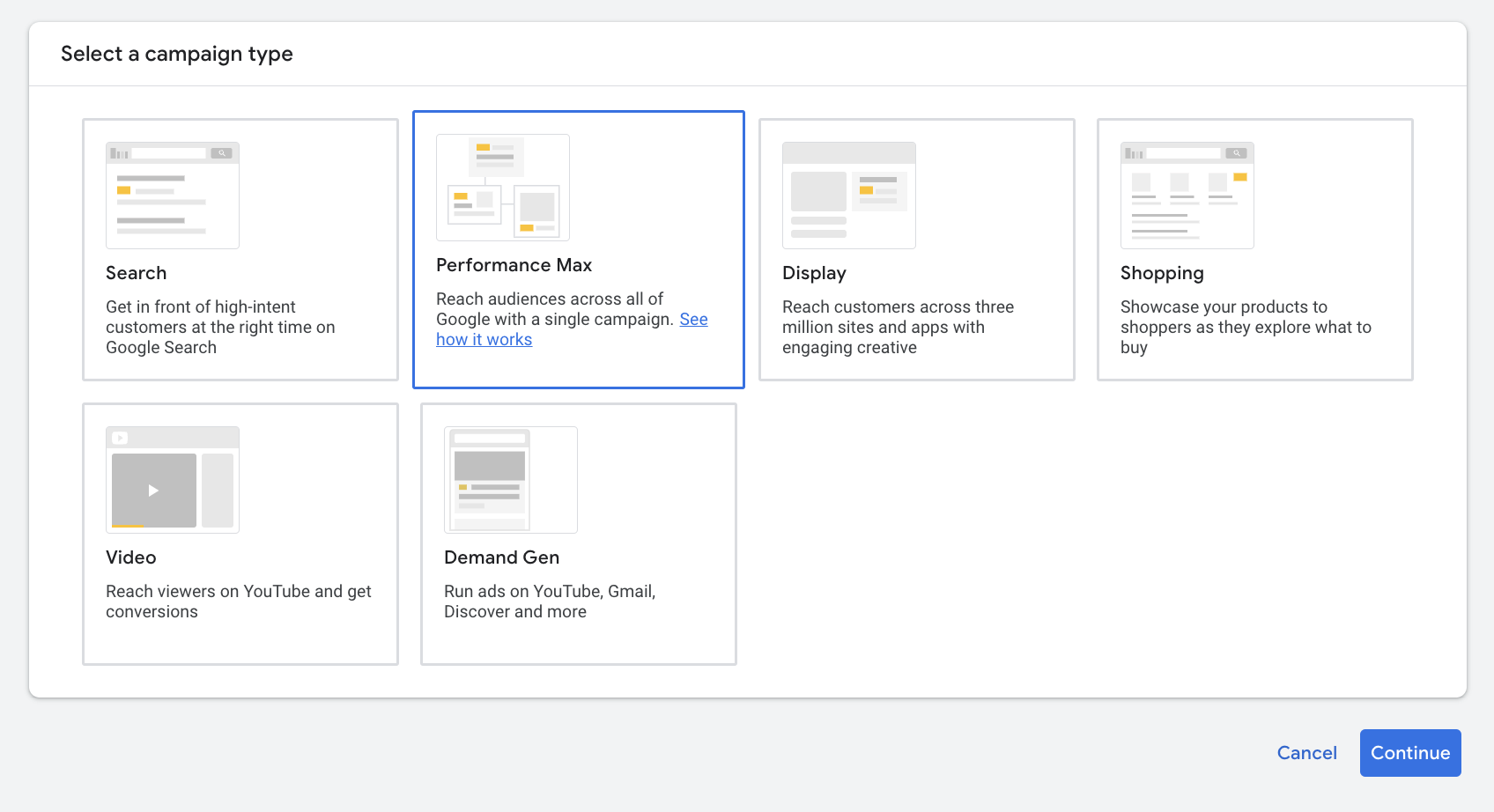
Step 2. Budget and bid strategy
After the campaign is created, you need to set a daily budget and decide on a bidding strategy. It is important to set a sufficient budget for the campaign to receive attention throughout the day. After launching the campaign, be sure to check if it is not limited in these capabilities and adjust the budget if necessary.
When it comes to the bidding strategy, Performance Max has two options — maximum conversion volume and maximum conversion value. Choose the one you need based on your goals. By default, Google sets the goal to maximize conversion volume.
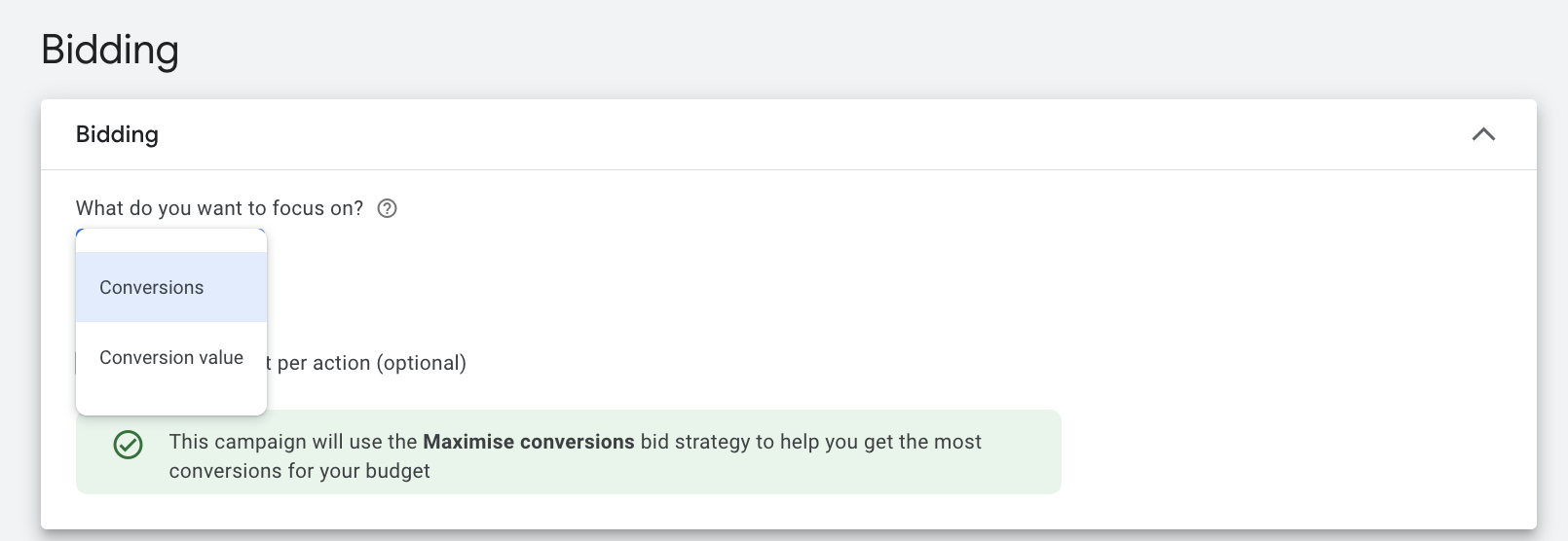
Step 3. Setting up location and language
At the next stage of campaign settings, you need to choose:
- Location. Select countries and cities where your ads will be shown. You can also add exceptions.
- Language. You can choose the language of your website, as well as the languages spoken by your customers.
- Ads display schedule (optionally). You can set it up if you understand at what days of the week and times of the day your customers are most active. You can also add the schedule later when you receive statistical data. This schedule allows for excluding ineffective periods and days and not showing ads during them. In the same settings section, you can choose the start and end date of the campaign if you, for example, want to set it up as a test campaign.
There is one more interesting option here, called “Final URL expansion”. By enabling it, you give the campaign permission to create additional ads based on your website and select your landing pages for them. It is critical to leave this setting enabled for online stores with a lot of products and pages, and it isn’t viable to create relevant ads for each manually. This setting should be turned off if you advertise a specific service or offer available only on the landing page and don’t need additional “creativity” from Google’s AI.
The Final URL expansion will also help you find new keywords based on your site’s content. Be sure to set the advanced URL options if you want to gain more control over which landing pages are used. If you don’t, Google will choose a landing page by itself. As a side note, Google crawls all site pages, so be careful here.
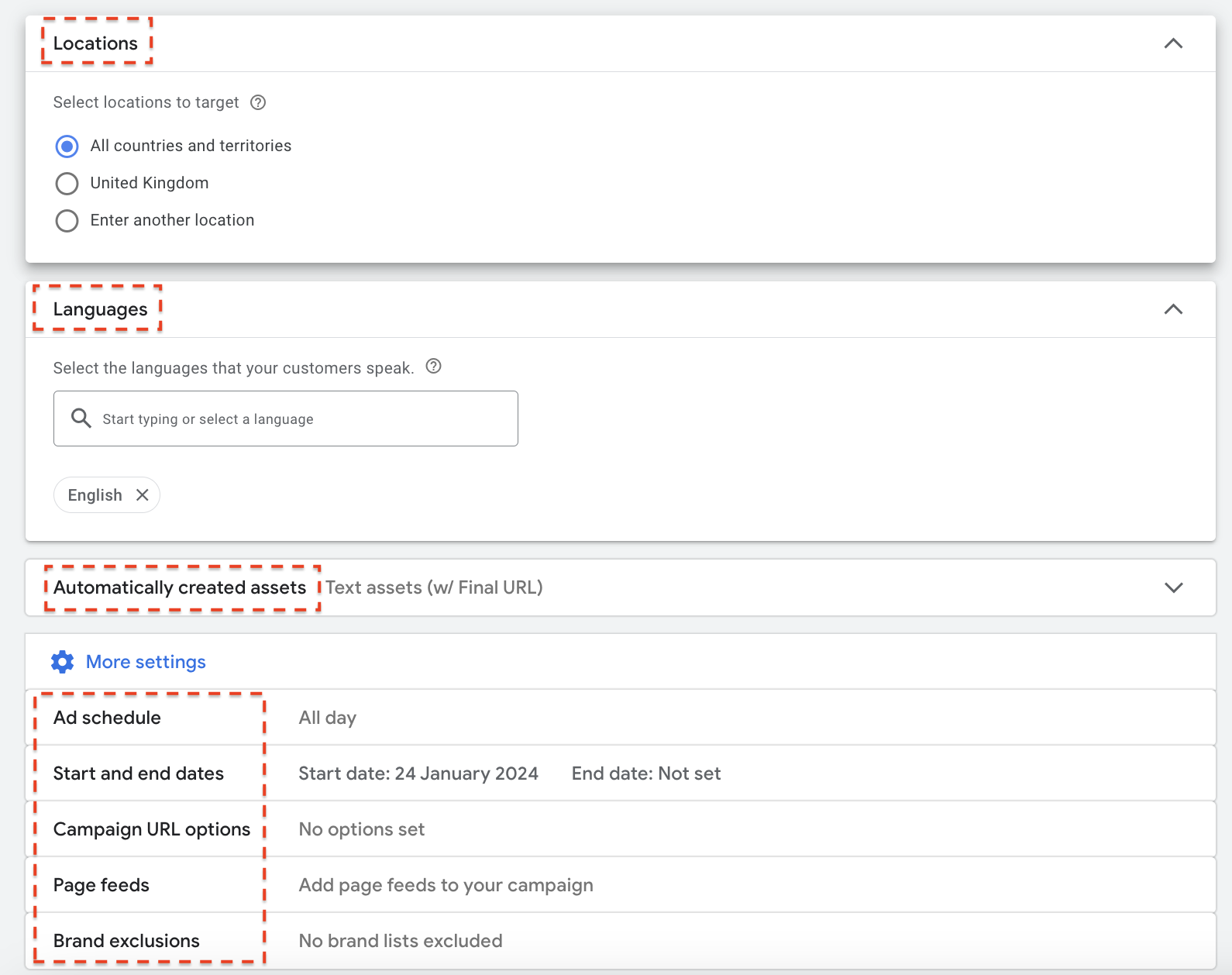
Step 4. Asset group settings
On the settings page of an ad asset group, you will discover that the process of setting up ads is completely different from setting up standard search or display ads.
Performance Max uses asset groups, which are sets of creatives that focus on a specific topic or are related to a target audience. They consist of images, logos, headlines, descriptions, and videos. You can add all of these when creating your ad. Google’s algorithms then mix them into different combinations and test them to find the ones that work best. Ads with top performance will be shown more often.
At this stage, you’ll need to add the following:
- the final URL;
- headlines;
- descriptions;
- images;
- videos (optional, but it increases the quality of your ad).
Here, you can also add the necessary product feed to your product group. For e-commerce, the most important part of setting up campaigns is product information. While all other elements play a significant role in the process, it is the product feed from Google Merchant Center that can have the biggest impact on the results of your Performance Max campaign. Therefore, make sure that your feed is correctly configured and contains as much information as possible: brand names, MPN/SKU, UCP code, descriptive titles (with the necessary keywords), product type, images, seller tags, etc.
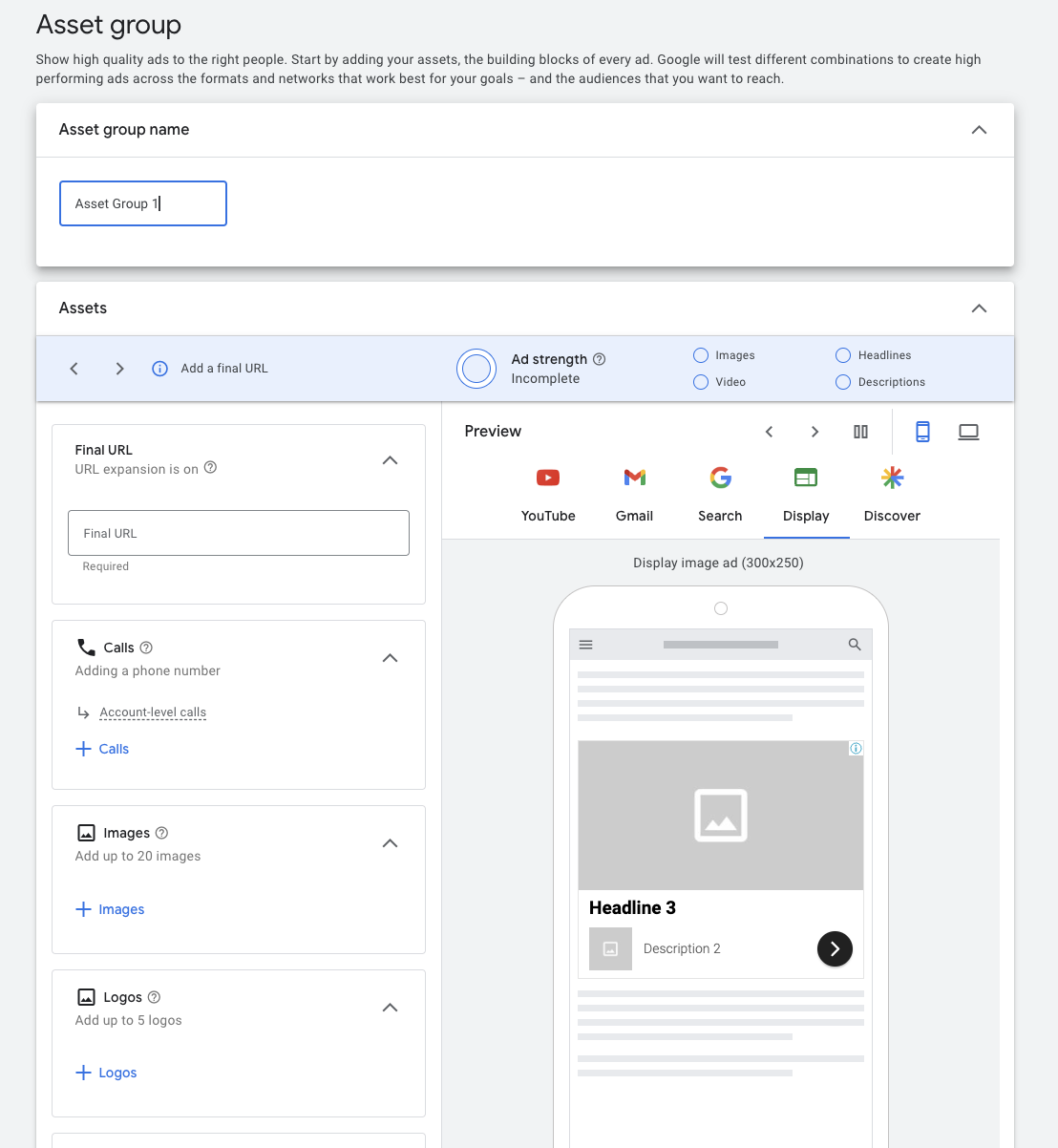
Step 5. Adding extensions
This step is optional and often ignored when creating campaigns. However, we recommend that you do not skip it, as extensions will help make your ad stand out and attract attention due to additional information and a larger ad size.
You can add several ad extensions, such as links to the site (links to its additional sections that will not be used as a landing page), structured descriptions, call extensions, and others. Extensions in your ad make it more informative for your potential customers and increase your chances of getting a user click.
Again, don’t forget that Google mixes and matches all the provided information. The more information you have, the more combinations of your ad there will be, and the higher the effectiveness of your campaign.
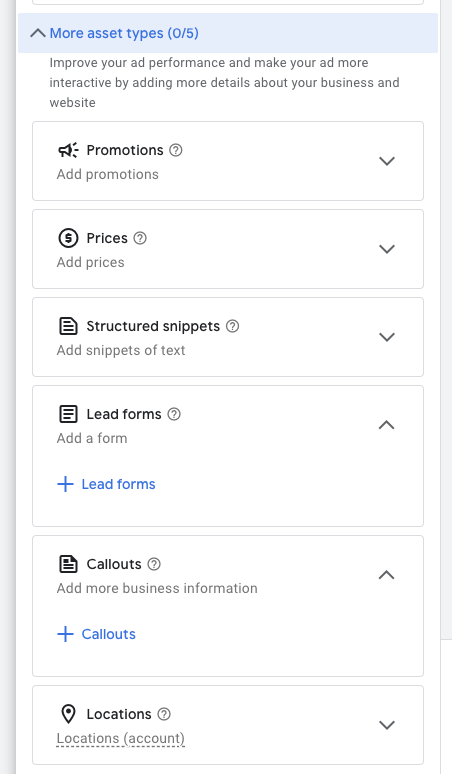
Step 6. Setting up audience signals
Adding audience signals is an essential step in setting up a Performance Max campaign. Audience signals work differently from direct audience targeting. The system uses them as a way to find your ideal potential customer. You can target the existing segments of your client base, retarget users who have interacted with your business, or use Google’s information about interests and detailed demographics to separate users into new categories.
- Your existing customer list will be a valuable reference point for finding new customers for your PMax campaign. Their email addresses can help the system find similar users and show them your ads.
- Add information in the “User intent” section. Here, you can list the most effective keywords (or search queries) from your search and sales campaigns.
- Add interests. Target people based on predefined interests in Google Ads.
- Use information about your website visitors. Focus on data about user behavior on your website. Google will use your data about existing customers and purchases to find and target new customers.
So, with PMax campaigns, you don’t need to set up targeting for a specific audience. Google’s machine learning takes care of that for you. However, we strongly recommend that you remember to create signals for your audience to help Google guide the campaign in the right direction.
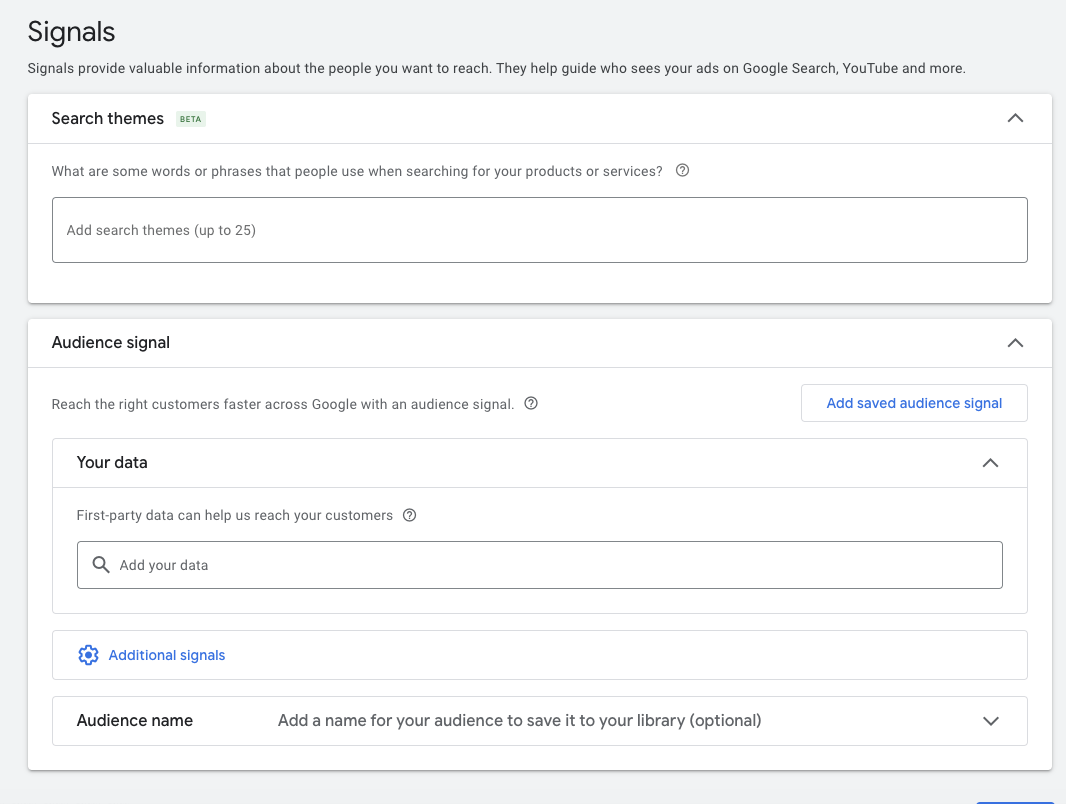
Your Performance Max campaign is now ready!
Don’t rush to expect quick results. Whenever you’re working with campaigns that use machine learning and automation in Google Ads (or any other PPC tool), it’s important to remember that it needs time to become effective. Making frequent changes only extends the learning curve of a campaign. Google’s system takes over the trial and error phase to find out which ads work best and which audiences are most convertible. So, allow your campaigns two to three weeks to see how they perform before making significant changes.
To get your Performance Max campaign off to a great start, follow these tips:
- Fill in all the available fields of product groups to the maximum. Add as many texts, descriptions, and images as possible. The more information, the better.
- Use all available settings. Don’t miss the opportunity to give your campaign as much insight into your business and goals as possible.
- Filter the placement of Performance Max campaigns, add negative keywords, exclude topics that are not acceptable to you, or prevent ads from being displayed in apps. You can do this in the “Content compliance” section in your account settings.
- Keep an eye on budgets. If the campaign is severely limited in budget, it will not get enough information necessary for training, and this stage will take more time.
How do you optimize a Performance Max campaign?
Your PMax campaign is already running and delivering results, but you want to increase its effectiveness and optimize the cost per click and conversions. Here’s what you can do:
Choose your campaign structure
Separate your products
When setting up a campaign to maximize effectiveness, you should consider its structure. Too much product segmentation can slow down the learning process of a campaign. Artificial intelligence works better when it can optimize performance across channels using one general budget rather than several small ones.
Create multiple campaigns
Additional segmentation into multiple campaigns is sometimes necessary. For example, when you set up campaigns for different countries or languages, it is impossible to split such targeting within one campaign. Assigning products to separate campaigns, you can set different budgets or target ad ROI values for new products, popular products, or seasonal offers. During seasonal sales, Google recommends prioritizing products and even setting up a separate campaign to maximize their visibility.
Create multiple product groups
Google recommends not to include products in a separate campaign in the following cases:
- When you need to combine products that should be displayed in sets or by topics. For example, if you sell home goods, you can group products for different rooms. You don’t need to create a separate campaign for each room.
- If certain products are more relevant to the audience signals you have added yourself. For example, you have uploaded a list of customers who have purchased bicycles from you, and now you need to sell them bicycle equipment. In this case, it makes sense to separate bicycle equipment from other products.
- During the holiday season, Google recommends creating new groups of holiday-related products within existing campaigns. This way, you will avoid seasonal advertising failures, such as the late start of product display, and will be able to optimize performance during this period.
Note: to effectively promote new holiday products, they should be uploaded at least two weeks in advance to ensure they are approved in time.
Also, for temporary promotional offers, it is convenient to use the product group display schedule to activate holiday or seasonal product groups for a certain time.
Improve product feeds
An important element of effective product advertising in Performance Max is a well-optimized feed. Here are some tips how to improve it:
- Upload detailed product descriptions and images, and regularly update pricing and availability information if it changes. The best solution is to set up automatic feed updates based on information from your website.
- Pay extra attention to the fact that product descriptions and titles should be filled with keywords and be understandable for potential buyers. Avoid adding too many abbreviations, and provide enough information about the product.
- Make sure that all uploaded products have been verified and can be displayed. Use the “Product issues” column to identify errors and missing attributes in feeds or to identify less effective offers.
- Using feeds, you can also attract users’ attention with special offers, create promotions, or indicate price reductions. Add information about free and fast shipping to emphasize your responsiveness, and use return policies to indicate the time frame for returns, such as “Free returns within 90 days”.
- Add special tags to the feed that indicate the high priority of the product (for example, “bestseller,” “popular,” or “holiday”). If necessary, you can use the tags to segment products into separate campaigns or groups.
Use Google Performance Planner
Performance Planner is an internal tool in your Google Ads account that helps you identify opportunities for additional sales. Using the data from this tool, you can understand what budget and bidding strategies you should use to achieve your goal and maximize your conversion volume/value.
The statistics in the Performance Planner help you find out the projected monthly and quarterly performance of your campaign. It also provides recommendations on how to improve your campaign’s performance within your budget. Additionally, you can get information on how changes in your budget or target bids can affect your ad performance. It’s very convenient and time-efficient because you don’t have to change your campaigns and wait for the results. Google’s artificial intelligence has already done it for you.
The forecasts created in the Performance Planner are adjusted and adapted to various seasonal events. This means you can predict conversion rates during certain periods, such as holidays or global sales (for example, Black Friday or Cyber Monday).
You can also use the Planner to research upcoming spikes in demand. Demand forecasts help you identify upcoming trends that are important to your business, such as sales or holiday seasons. Thanks to Google’s data, you can also identify new events that may be relevant to you. Perhaps, in addition to the popular dates and seasons, there are extra ones that can stimulate demand for your products and services.
Use Google reports and statistics to evaluate your results
Analyze product advertising performance reports
- Use product analysis on the “Products” page in Google Ads to identify opportunities for optimization at the product level based on their estimated potential. The “Diagnostics” tab helps you identify and resolve issues affecting the performance of individual products.
- View the most popular products in the “Best Sellers” report in Google Merchant Center. Use this report to analyze demand for brands and products and determine which items to prioritize in your advertising campaigns.
- The “Price Competitiveness” report in Google Merchant Center shows your competitors’ prices for similar products by category, country, and brand. Use this information to improve your pricing and bidding strategies.
Learn how users search for products
- Search term statistics help you understand your customers’ queries and group them into categories. You can also select a specific timeframe to view statistics from that period.
- Analyze search trends to see if you meet increased demand in categories relevant to your business. Use these statistics to make sure your budget, assortment, promotions, and landing pages correspond to the trends in customer interest.
Analyze the most attractive ads
- Use the “Ad Quality” tool to find out the quality level of your ads (low, good, or high) and determine whether you need to add new products for Google’s artificial intelligence to use in your creatives. If you have already added the maximum number of products, replace existing products that show subpar results with better ones.
- Analyze the most effective product combinations for each product group in the “Combinations” report. This report also allows you to visualize how texts, images, and videos are used in various ad formats.
- View audience statistics for products to find out which ones are most interesting to different audience segments. Use this information to create new ads and attract the most active clients.
Analyze the most active customers and discover new audiences
- With Google’s reports, you can view audience statistics to identify the main interests and behaviors of users who have converted in Performance Max campaigns. This way, you can understand which audiences drive conversion the most.
- Analyze conversion data in the form of audience signals by viewing segments labeled as “Signals”. Pay attention to segments labeled “Optimized” to learn about new audience segments that Google’s artificial intelligence has discovered for you.
Conclusion
In the world of constant innovation and rapid development of digital marketing, it is important to adapt to new technologies in time and use their capabilities effectively. Performance Max campaigns in Google Ads are distinguished by their efficiency and a wide range of features that make them an integral part of any advertising effort.
Performance Max uses advanced technologies, such as Google’s AIs and machine learning, to optimize your campaigns in real time. This means that your ads will always adapt to changes in demand and user behavior, ensuring optimal performance and conversion.However, to achieve the best results with Performance Max, you should have a deep understanding of all the tool’s features. You can contact Livepage’s PPC specialists for professional setup and receiving such PPC campaign management service. Our experts have in-depth knowledge of digital marketing, including digital marketing for SaaS, and can optimize your PMax campaigns to maximize their potential for your business.






